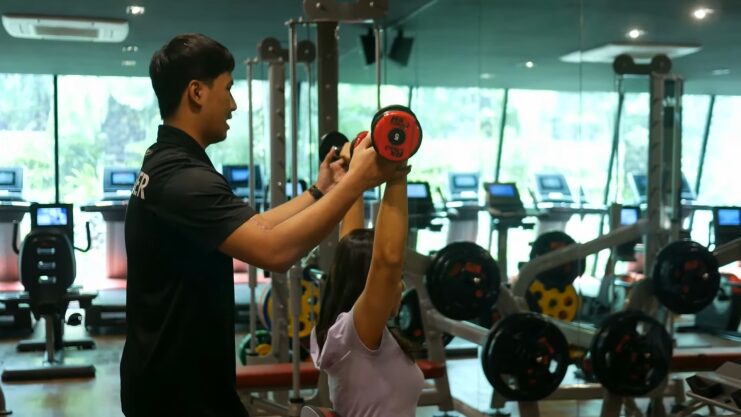So, you’re a fitness professional, or maybe you’re thinking about becoming one. That’s awesome! But before you jump into the deep end, let’s chat about some common missteps that many in the industry make.
Knowing about these pitfalls can save you a lot of stress and make your path to success a bit smoother. Here’s a rundown of 10 mistakes you might want to avoid and some tips on how to steer clear of them.
1. Not Listening to Clients

One of the biggest mistakes I’ve seen is fitness professionals not truly listening to their clients. It’s easy to get wrapped up in the technical aspects of fitness and forget that each client is bringing their own unique needs and experiences to the table.
For instance, a client might have an underlying health issue or specific fitness goals that need to be addressed differently from the general approach.
2. Overloading Clients with Information
When you’re passionate about fitness, it’s tempting to share as much knowledge as possible. However, bombarding clients with too much information at once can be overwhelming. Explaining complex nutrition theories or advanced training techniques might be confusing for someone just starting their fitness journey.
Simplify your messaging. Focus on a few key pieces of information at a time. Break down concepts into manageable chunks and build on them gradually. This method not only makes the information more digestible but also helps clients retain and apply what they learn.
3. Neglecting Your Own Health and Wellness

It’s ironic but true – many fitness professionals put their own health on the back burner while helping others. Long hours, high stress, and neglecting personal workouts can lead to burnout. If you’re constantly working with clients and skipping your own exercise routine, you might lose the energy and enthusiasm needed to be an effective trainer.
4. Focusing Only on Physical Results
While physical transformations can be a major motivation, they shouldn’t be the only focus. Many clients seek fitness for improved mental health, increased confidence, or overall well-being. For example, a client might be working out to manage stress rather than solely to lose weight.
Recognize and celebrate all types of progress. Emphasize the mental and emotional benefits of fitness alongside physical changes. By acknowledging achievements in these areas, you can boost your clients’ motivation and satisfaction.
5. Offering Generic Programs

A common mistake is using the same workout program for everyone. While it might save time, a one-size-fits-all approach doesn’t address individual needs and goals. For instance, a program designed for a beginner might not be suitable for an advanced athlete, and vice versa.
To further enhance your ability to customize programs, consider expanding your expertise by obtaining an additional certification. In fact, you can find many different types of certifications at https://www.americansportandfitness.com/collections/fitness-certifications.
6. Overlooking the Need for Continued Education
The fitness industry is constantly evolving with new research, techniques, and trends. Staying updated is crucial to providing the best service and maintaining your professional edge. For example, advancements in exercise science or nutrition can significantly impact how you design your programs.
Engage in continuous learning. Attend workshops, take online courses, and stay informed about the latest developments in fitness.
For example, using tools like the Adobe Express video editor can help fitness professionals create engaging workout demonstrations and client education videos.
This commitment will enhance your expertise and keep you ahead in the industry.
7. Being Too Rigid with Scheduling

Strict schedules can sometimes create unnecessary stress and friction. Life is unpredictable, and clients might need to reschedule or adjust their plans occasionally. A rigid approach can lead to dissatisfaction or even the loss of clients if they feel pressured or inflexible.
8. Neglecting Communication Skills
Fitness isn’t just about exercise, it’s also about effective communication. Poor communication can lead to misunderstandings and hinder progress. For instance, if clients don’t clearly understand instructions or feedback, they might struggle to follow your guidance.
Develop strong communication skills. Be clear and concise in your instructions, and offer constructive feedback in a supportive manner. Good communication fosters trust and helps clients stay motivated and engaged.
9. Overlooking Business Essentials

Being a fitness professional involves more than just training clients. Managing the business side—such as marketing, budgeting, and client management—is equally important. Many trainers overlook these aspects, which can impact their success and growth.
10. Losing Passion for the Job
It’s easy to get caught up in daily routines and challenges, which might cause you to lose sight of your initial passion for fitness. If your enthusiasm wanes, it can affect both your motivation and your client’s experience.
Regularly revisit your reasons for pursuing a career in fitness. Find ways to reignite your passion, whether through new challenges, client success stories, or personal fitness goals. Passion is contagious and will positively impact your clients.
Wrapping It Up
Avoiding these common mistakes can make a big difference in your career as a fitness professional. Incorporating fitness routines that benefit from post-workout massages can further enhance your clients’ recovery and performance.
It’s all about staying connected with your clients, continuously learning, and taking care of yourself. You’ll not only enhance your own professional growth but also make a positive impact on those you work with and that is actually the ultimate goal, isn’t it?

